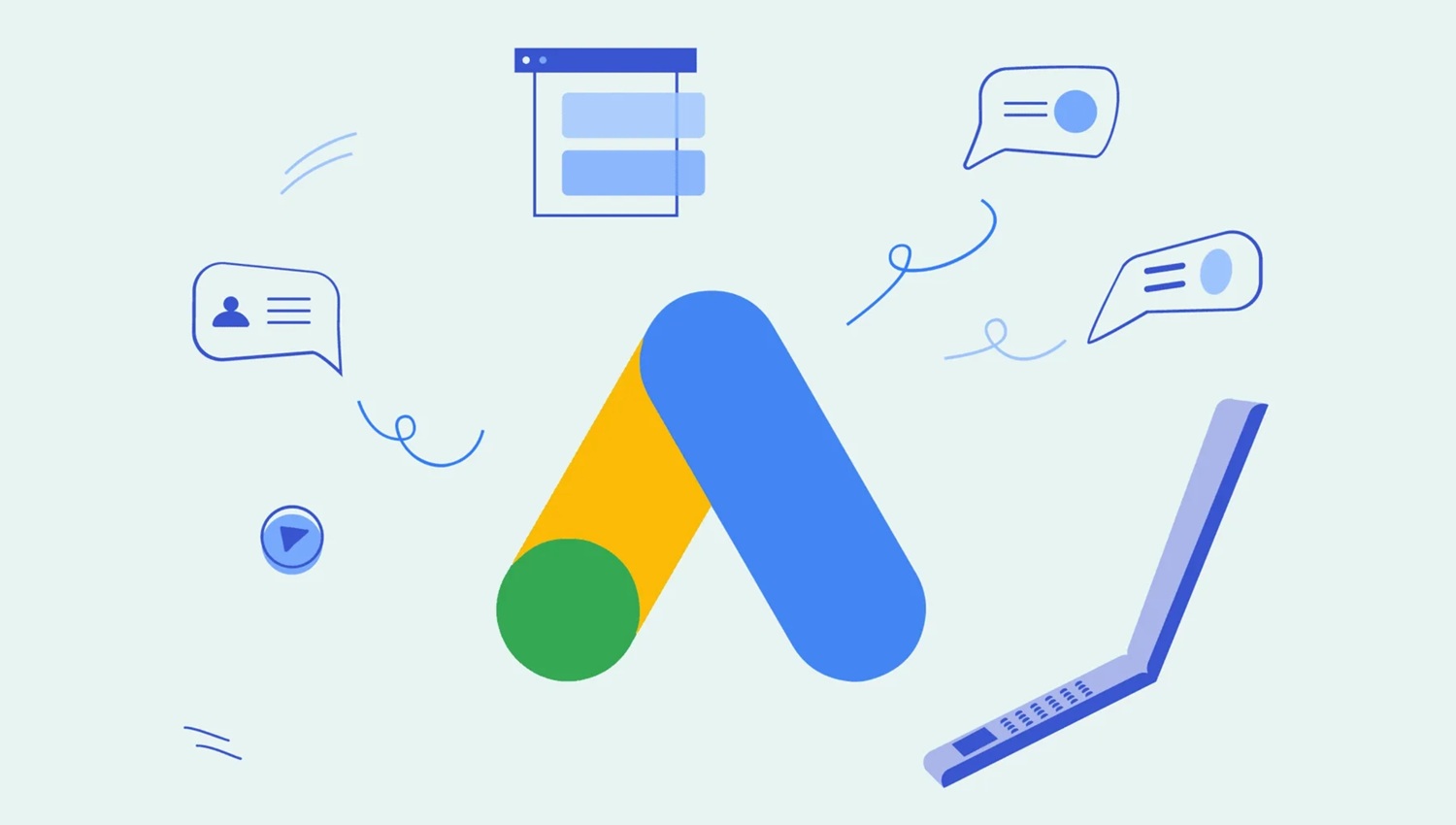Yes! The significant difference between Google AdWords and Google Ads is the restructuring that the former underwent to pave the way for the latter. While their foundations remain the same, the features have evolved over the years. Google AdWords, created 18 years ago, was renamed Google Ads and gained new features.
Continue reading our article to learn more about the Google Ads tool!
What are Google AdWords and Google Ads?
Google AdWords is an older Google advertising tool launched more than two decades ago. It has undergone constant updates and, in 2018, underwent a complete redesign, now referred to as Google Ads.
Here’s how it works: companies or advertisers purchase sponsored links on Google. When a person clicks on the ad, they are charged a fee per click, known as CPC (average cost per click).
In practice, when using Google Ads, you pay a fee ranging from a few cents to a few dollars when people click on your link. At that moment, the individual is redirected to your page or a pre-configured page through the chosen ad link.
A brief history of Google AdWords and Google Ads
Understanding the development of Google’s advertising platform is intriguing, as it has become one of the primary ways companies advertise on the internet.
Since its launch in 2000, Google AdWords (now Google Ads) has undergone more than 200 updates to align with market expectations. New features and technologies have been incorporated into the solution.
When Google AdWords began over 20 years ago, only 350 advertisers were using it. Back then, Google didn’t even have an image search feature.
CPC was introduced in 2002, and in the following year, Google AdSense was launched, expanding the reach of ads. By 2005, Google Analytics was introduced, monitoring website and blog performance, aiding in tracking company-sold advertisements.
In 2007, ads were introduced in YouTube videos. Further modifications and updates followed, including the acquisition of DoubleClick for US$3.1 billion. Even the old social network Orkut featured Google AdWords ads in 2008.
Improvements continued, and in 2018, Google AdWords became Google Ads. The tools were consolidated and reorganized to adapt to the new solution. Ad campaigns became smarter, new smartphone integrations were implemented, and real-time ad performance monitoring became possible.
Professions emerged from Google AdWords and Google Ads, and today, the advertising world revolves around the company, even as social networks play a significant role. With this rich history, Google is unlikely to be left behind.

How does Google Ads work?
Now that you have a bit of insight into the history of Google’s most prominent advertising product, let’s explore the main types of campaigns that can be created using the tool:
- Search Network:
- Search ads are the most traditional and straightforward to implement.
- They appear as the first results when someone searches for specific keywords, presented in the form of an ad.
- Other results are organic, achieved through Content Marketing and SEO strategies.
- Display Network:
- Unlike ads on the search network, those on the display network can include images and videos.
- Ideal for remarketing and reaching a broader audience.
- Local Campaigns:
- Local campaigns help users find businesses close to their location.
- Ideal for businesses like restaurants, bookstores, and hotels, allowing users to locate the physical establishment of the company.
- YouTube Ads:
- Commonly encountered by frequent users of YouTube.
- Ads can take different formats, with skippable and non-skippable options being the most common.
After creating a campaign, you can choose the type of ad that best aligns with your strategy. You can specify keywords, regions, age groups, daily investment, gender, and other parameters to target your ads to individuals interested in your product or service.
What are the main changes from Google AdWords to Google Ads?
As mentioned at the beginning of the post, numerous changes have occurred since the inception of Google AdWords until its rebranding into Google Ads. Let’s explore the key modifications:
- Images:
- With Google Ads, adding images is more efficient.
- Performance tests can be conducted to evaluate how images impact ad effectiveness, leading to more optimized results through visual content.
- Brands:
- Google Ads allows advertisers to leverage other Google brands, such as Google Ad Manager and the Google Marketing Platform.
- These resources help ads reach a wider audience.
- Smart Ads:
- Google Ads offers diverse ad campaign types that can be distributed across different platforms, including Google’s search engine and YouTube.
- This integration enhances the user experience across their regularly used platforms.
Additionally, the introduction of the Google Integration Center facilitates connecting brand products and enables the use of third-party companies to achieve more satisfactory results.
5 Reasons to Advertise on Google Ads
There are several compelling reasons for those looking to advertise on Google Ads, with some standing out as particularly advantageous for advertisers. Here’s the ranking we’ve prepared for you:
1.Lead Scalability:
- The ability to scale leads is a significant advantage for advertisers.
2. Metrication of Results:
- The capability to measure and analyze results provides valuable insights for advertisers.
3. Agility in Creating Campaigns:
- Google Ads offers swift and efficient campaign creation, ensuring flexibility for advertisers.
4. High Performance of Ads:
- Ads on Google Ads exhibit high performance, leading to effective outcomes.
5. Increased Brand Visibility:
- Advertising on Google Ads enhances brand visibility, contributing to a broader reach.
How Does Ads Determine Ad Position?
Ad position on Google Ads is determined by various factors. According to Google, ranking plays a crucial role in defining the display position, and six factors are considered:
- Bid:
The bid represents the maximum amount the advertiser is willing to pay for each click on the ad.
- Quality:
Quality is assessed based on the ad’s relevance and usefulness.
- Minimum Rating:
This rating, determined by the company, sets the minimum values an ad needs to meet to be considered of high quality.
- Competition:
Ad rankings are influenced by competition from other companies with similar ads.
- Context:
The context surrounding the user’s search plays a crucial role in determining whether the ad is relevant and should be displayed in top positions.
- Impact Estimation:
Google evaluates the impact of extensions and other ad formats to determine the ad’s position.
Count on Digital Consulting:
Digital Consulting specializes in creating and optimizing campaigns, particularly focusing on sponsored ads such as Google Ads. If you need efficient and results-focused assistance, you can rely on us!
Explore our website to discover all the services we offer, especially those related to performance, helping your company position itself in advertisements across various platforms.
Discover our Search Engine Marketing Services





